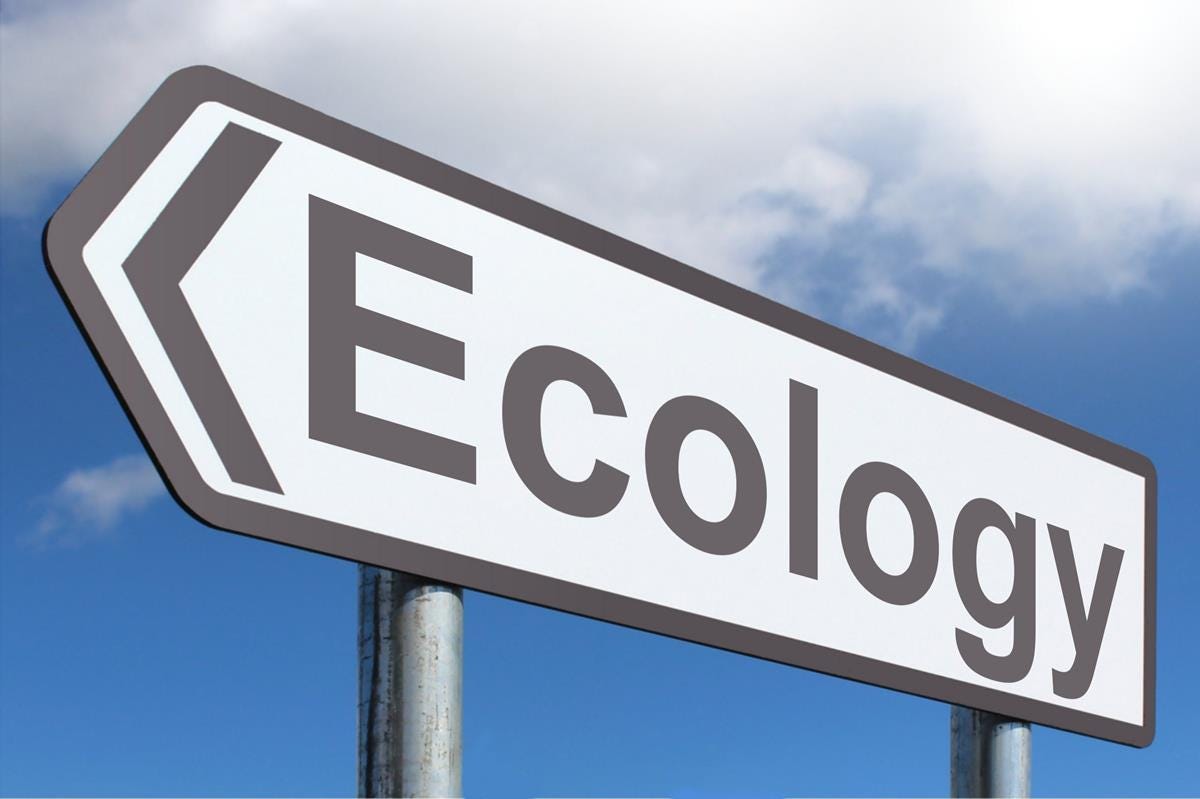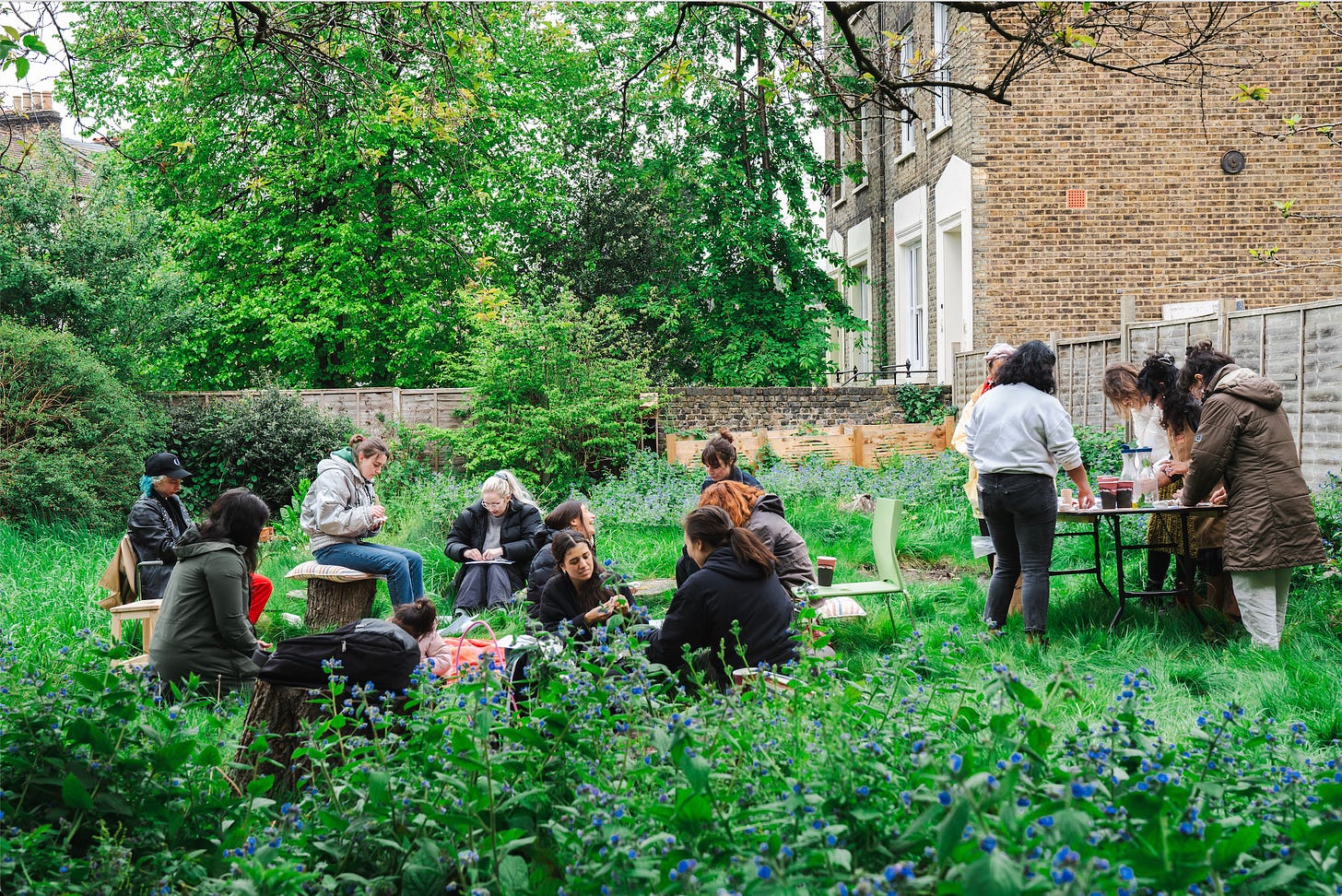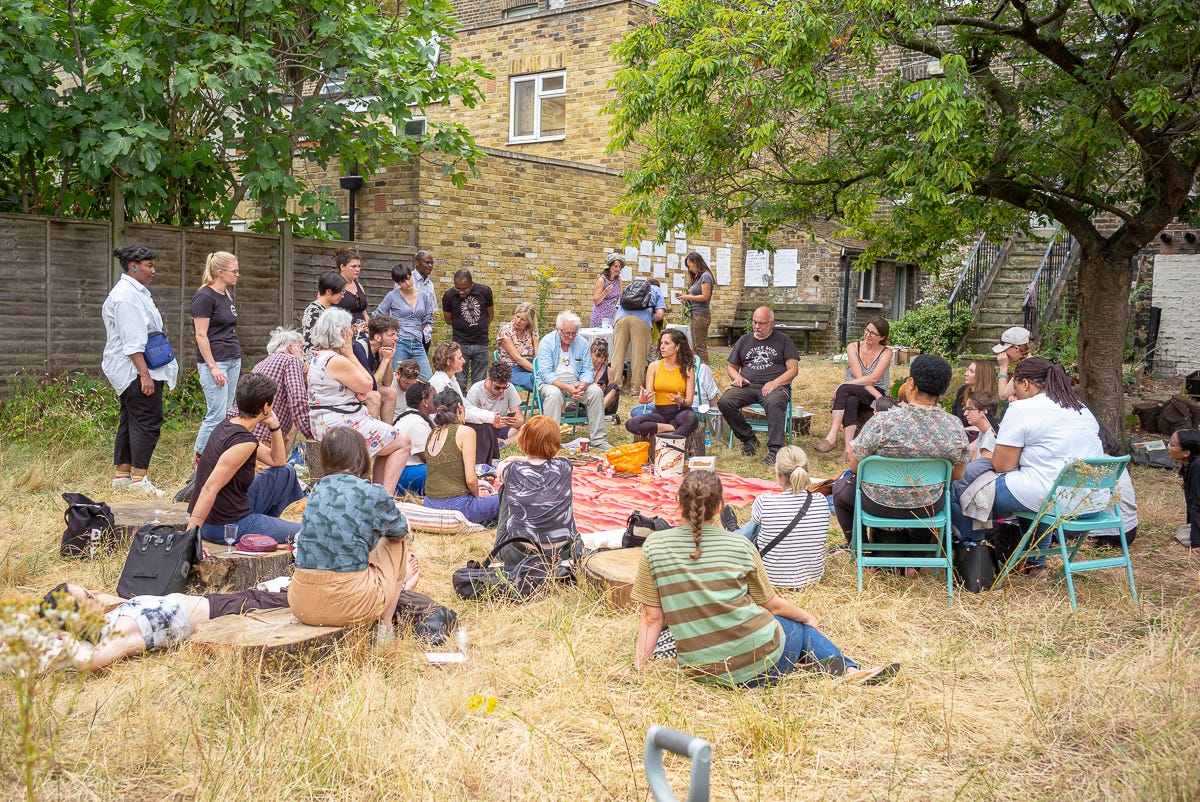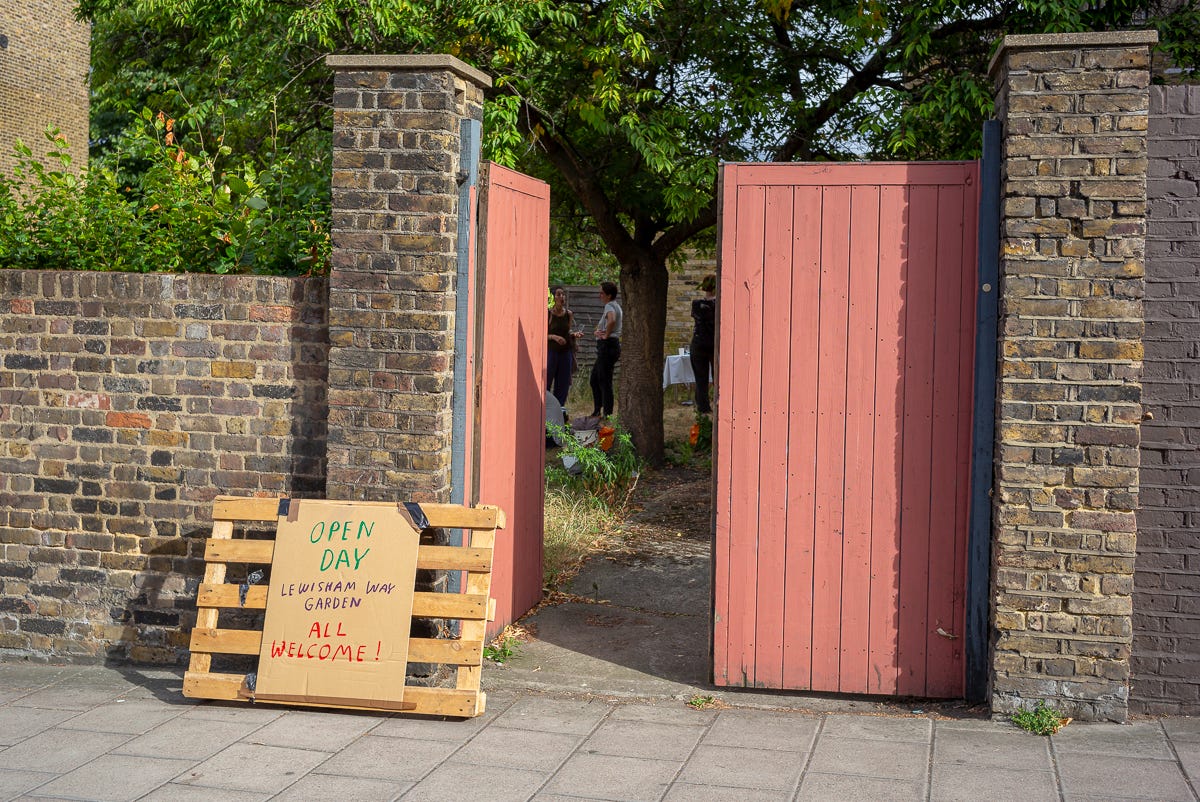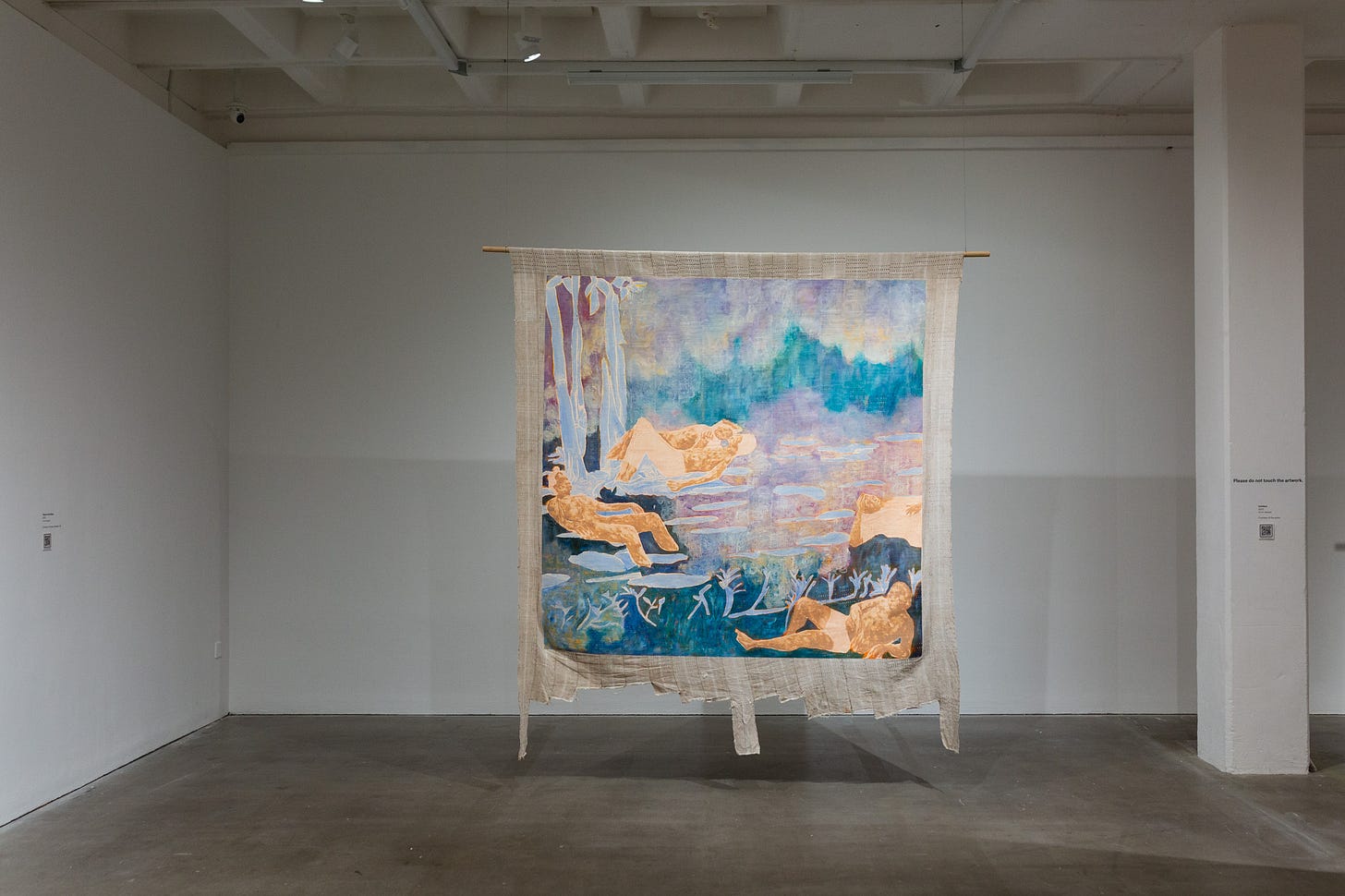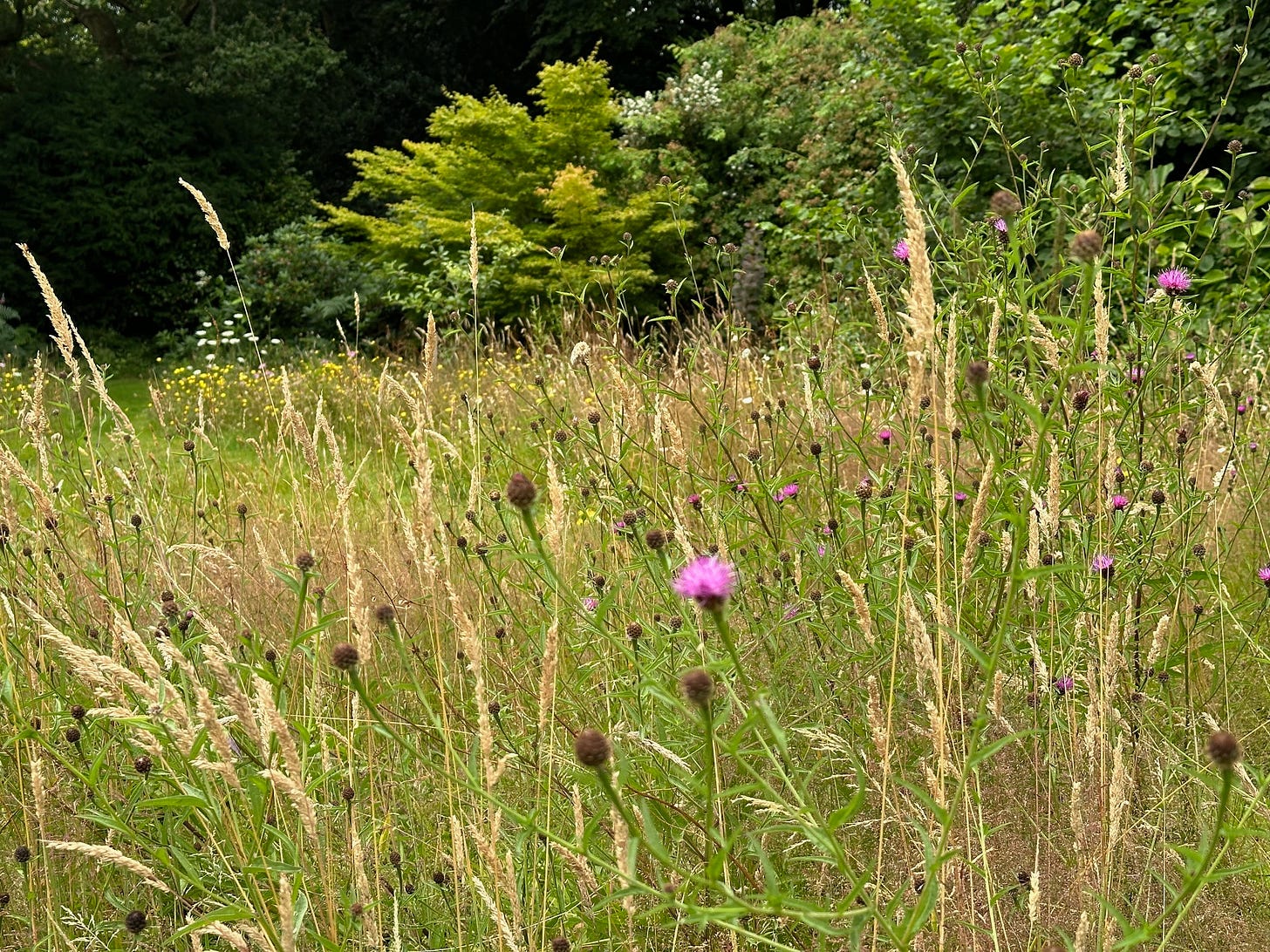Why do we talk about ecology?
Where art and ecology come together | Spotlight on... Nengi Omuku | Unfurling leaves: Radicle | In the mycelium...
If you are reading this, you have found a newsletter called “Art & Ecology”. It is a name that does what it says on the tin. This is a newsletter about the myriad places in which “art” and “ecology” meet, meld, and disrupt each other.
This is obviously a broad remit, particularly if you accept Timothy Morton’s assertion that all art is ecological, or if you subscribe to the viewpoint that art is contained within ecology. Of course, you could parse any such phrase into meaningless nonsense – and there is sometimes a magic in nonsense.
Many thinkers have written eloquently on complex psychocultural associations of alternative words such as “environment”, “nature”, and “Anthropocene”, and the significance of “ecology” has also been widely explored, most compellingly perhaps by Malcolm Ferdinand in his work on “decolonial ecology”.
To me, the idea of “ecology” is powerful because it feels personal – in a sense that goes beyond the construction of the personal as individual in patriarchal-capitalist terms, and instead construes the personal as a position of openness and relatedness. Ecology refers to the interconnected webs of species, places, materials, and histories that make up the world; emerging across relationships, networks, and positions of codependency. Ecologies include the human as an animal as well as human social systems, situating us within the workings of power, offering spaces in which we can respond with accountability and ethical practice.
There is a plurality to the concept of ecology, which suggests not only scientific ecologies but also cultural ecologies, including non-Western and non-normative systems of thought, belief, and relation with the nonhuman. Ecology is compost. Ecology is mycelium. Ecology is community. And the places where art and ecology meet are places for fruitful encounters and enmeshments, with the potential to spiral out across media, disciplines, and ecosystems.
A new space for art and ecology
Somatic Landscapes workshop co-organised with the @hildegardsgardeningsociety and facilitated by Anju Marie Kasturiraj @godsfavoritehorror in the Art Research Garden, 27 April 2024. Photographer: @snapblast
These rambling thoughts on ecology came out of a discussion with Dr Ros Gray and Dr Anna Colin, the directors of the new Centre for Art and Ecology at Goldsmiths University. The centre is intended to be a a platform for interdisciplinary practice-based artistic research in the expanded field of art and ecology. This might encompass “interdisciplinary modes of engagement with urban ecologies; living systems; rewilding; biomaterials; regenerative food systems; citizen science; climate change resilience; depollution; cultural and scientific meanings of plants, soil, atmospheres, the planetary and the cosmic; interfaces and intra-actions of nature, technology and data.”
The centre builds on work that has been done at Goldsmiths over a number of years, including the “critical ecologies” research stream, the MFA curating course, and the recently established MA in Art and Ecology. It attempts to offer a support structure for innovative and radically inclusive forms of research, promoting collaboration across disciplines and modes of working to nurture multispecies communities, kinship, reciprocity, and practical ways of caring for ecological relationships.
The centre and much of its research and teaching are grounded in the Art Research Garden, which opens onto a busy road in the heart of Lewisham, a socially deprived part of London. This garden has become a site for experimentation, installation, and regeneration, becoming an integrated part of many research projects, bodies of work, and workshops. For instance, “Seeding the Garden” (2022) by Dr Anna Colin initiated research into how the Art Research Garden is situated within a network of green spaces across Lewisham and art research gardens internationally. As part of this, artists Harun Morrison and Paul Granjon were commissioned to design a composting system that they conceived as a Singing Compost, embedded with microphones and microbial batteries to translate the sounds of the decomposition of garden waste.
Lewisham Way Garden, Harun Morrison, Garden Project, Lewisham, 2022. Photo: David Brunetti
In this project as elsewhere, there is an emphasis on community action, as well as workshops involving local people. Actions such as these are part of a broader attempt to open up art and ecology beyond the parameters of the institution, the rigidity of academic disciplines, and the barriers often felt between universities and the “real” world of everyday life. Like an unruly garden, art often sits out of kilter within its institutional context, disrupting expectations and flows of power.
With members drawn from across departments at Goldsmiths as well as external members, the Centre for Art and Ecology forms an overarching means of instigating, producing, and sharing such work. Its establishment responds to notable trends among artists and researchers, for instance in artists training in gardening, farming, and ecological repair. Drawing these actions into a polluted urban context opens up questions about how we can enact repair without returning to some lost state of being. We are already situated in the damage, and we must learn to live in the ruins.
Harun Morrison, Garden Project, Lewisham, 2022
Spotlight on… Nengi Omuku
Nengi Omuku, The Dance of People & the Natural World at Arnolfini, Bristol, 2024. Lisa Whiting Photography.
Nengi Omuku’s human figures blend seamlessly with the more-than-human world, exploring the relationship between individual and collective thought, belonging, and psychological spaces that transcend traditional Western landscape painting. Her dreamlike scenes are painted onto "Sanyan", a pre-colonial Nigerian textile woven from moth silk and cotton, often used at celebrations, blending Western oil painting traditions with Nigeria’s textile craftsmanship. Hung away from the gallery wall or suspended from ceilings, Omuku invites the audience to see both sides of each cloth, revealing symbolic artistry and patterns like prayers of fertility woven within.
Nengi Omuku: The Dance of People and the Natural World continues at Arnolfini, Bristol, until 29 Sept 2024 | Read more here | Follow @nengiomuku
Unfurling leaves… Radicle
Sui Searle is the creator of @decolonisethegarden which focuses on bringing a decolonial lens to horticulture, and is editor of the online gardening newsletter, Radicle. Both aim to seek, in community, possibilities of an otherwise. (You can read my essay “Towards a Vegetal Feminism” on the Radicle substack here!)
Sui retrained in horticulture as a career changer twenty years ago and has worked in botanic, public, private and community gardens as well as spending a short period writing for gardening magazines. These days she is interested in the garden as a site of an ever-changing co-creation with the potential for us to practice decolonial modes of being - a place to practice being in kinship and cultivating deeper relationships with our more-than-human kin. She believes in the healing power of returning to and re-membering our connection with the earth, ourselves, our more-than-human kin and each other. She has recently contributed chapters to the book This Allotment, edited by Sarah Rigby, and to the forthcoming anthology A Garden Manifesto, edited by Olivia Laing and Richard Porter from Pilot Press. An interview she recorded with Isabella McDonnell of Xeno podcast will be coming out soon at the end of July.
Follow @decolonisethegarden | Read
In the mycelium…
Towards New Worlds, MIMA, Middlesborough | until 9 Feb 2025
Emii Alrai: A Lake as Great as Its Bones, Maximillian William, London | until 7 Sep 2024
Más Arte Más Acción: Around a Tree – A marathon of voices to connect plants and people, Royal Botanic Garden Edinburgh | 9 - 25 Aug 2024
Becky Lyon: Muntjac, curated by Kirsty Badenoch, Microscope Gallery, London | 1 - 16 Aug 2024
Writing for artists
I’m holding an online back-to-school writing workshop for artists on Monday 2nd September. We will explore strategies for artists writing about their own work, whether for an artist statement, website, or residency application. Through a mixture of theory, practical tips, and creative exercises, we will work to grow your confidence in your own voice and in your writing skills.
Pay-what-you-can tickets available here!
This newsletter is free for now…
…but in the future I hope to turn on paid subscriptions to make it sustainable for me. In the meantime, I’d love to hear any feedback and whether you might be happy to upgrade to a paid tier in the future!



